THE TRIALS of Nelson Mandela – in photos. The trials last 12 years…
The three ANC Youth Leaders, Nelson Mandela, centre, Walter Sisulu, left, and Harrison Motlana, pictured in 1952 during the Defiance Campaign trial at the Johannesburg Supreme Court, South Africa. The Defiance Campaign encourages blacks to defy apartheid laws. Date: 01/01/1952
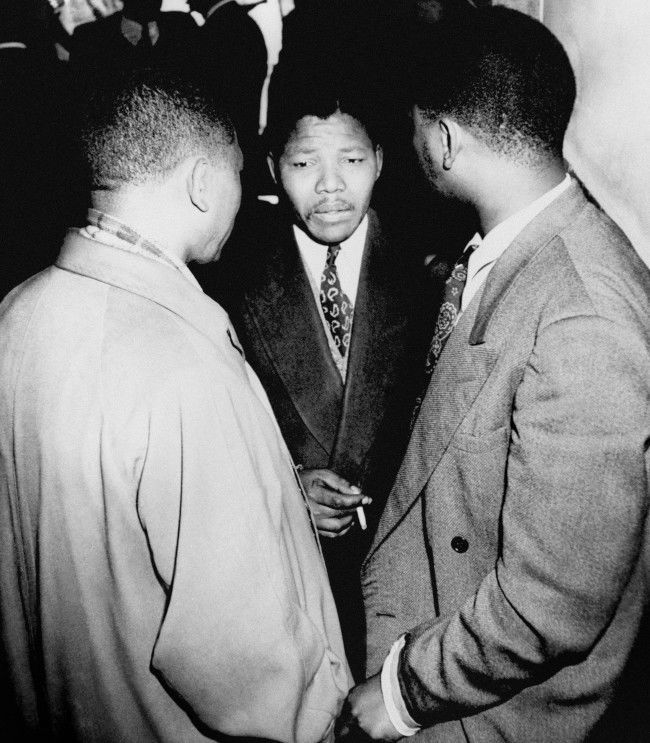
* In December 1956 many key members of the Congress Alliance were arrested and charged with treason, including the almost entire executive committee of the ANC, as well as the SACP, SAIC, COD. 105 Africans, 21 Indians, 23 whites and 7 coloured leaders were arrested. Ten were women. Many arrestees, including Nelson Mandela, were detained in communal cells in Johannesburg Prison, known as the Fort, resulting in what Mandela described as “the largest and longest unbanned meeting of the Congress Alliance in years.” However, white men, white women, black were all held in a separate parts of the jail.
Initially, 156 defendants were charged with high treason. The number of defendants was later reduced to 92. In November 1957, the prosecution reworded the indictment and proceeded a separate trial against 30 accused. Their trial commenced in August 1959. The remaining 61 accused were tried separately before the case against them was dismissed in mid 1960.
Crowds cheer as a police van brings prisoners to the Drill Hall, in Johannesburg, South Africa, Dec. 31, 1956, for the start of the ‘Treason Trial’. One man has climbed onto the step of the van top shout encouragement to the inmates. Nelson Mandela was among the people arrested and standing trial. Date: 31/12/1956
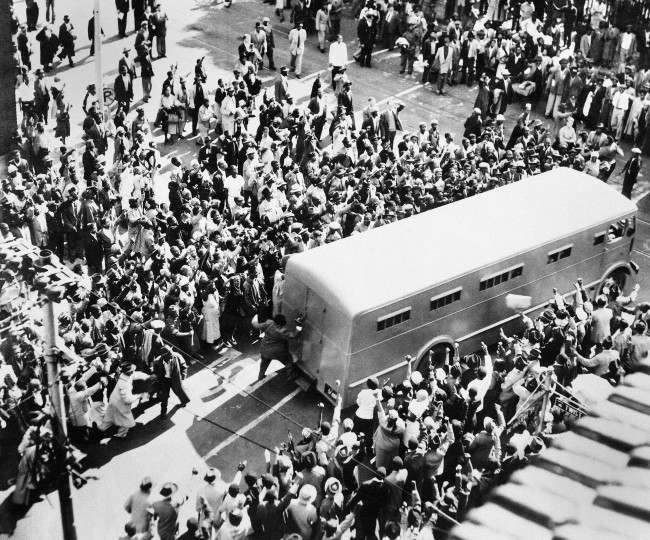
The timeline:
December 1956: 156 anti-apartheid leaders arrested
December 1956 – January 1958: Preparatory examination in a magistrates court to determine if there was sufficient evidence to warrant a trial.
November 1957: Prosecution rewords the indictment and proceeded a separate trial against 30 accused. The remaining 61 accused were to be tried separately before the case against them was dismissed in mid 1959.
August 1959: Trial against 30 defendants proceeds in the Supreme Court.
5 March 1960: Chief Luthuli’s testimony begins.
8 April 1960: ANC is declared banned in the wake of the State of Emergency declared after the Sharpeville massacre – 69 blacks are shot dead by the police. Defendants retained in custody for five months and trial resumes without lawyers for several months.
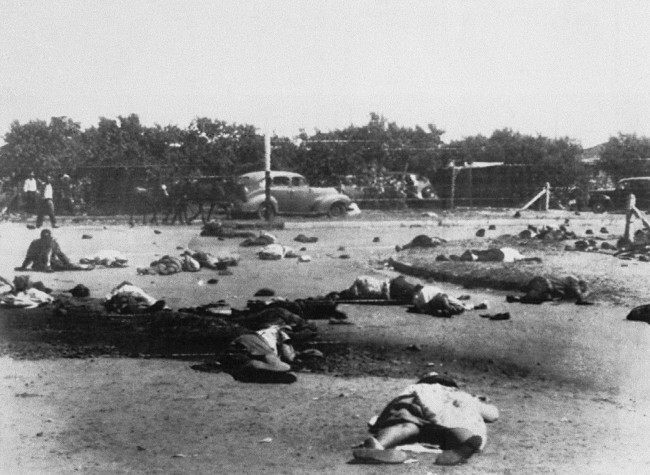
May 1960: Helen Joseph and 21 left-wing white women detained during the State of Emergence embark on an eight-day hunger strike. The children of detainees protest outside Johannesburg city hall.
3 August 1960: Mandela’s testimony begins.
7 October 1960: Defense closes.
23 March 1961: Trial adjourned for a week.
29 March 1961: Accused are found not guilty.
A picture taken by Jurgen Schadeberg in October 13, 1958, shows Nelson Mandela, right, and Moses Kotane, left, leaving the court after the State withdrawn the indictment during the Treason Trial, hanging is his room at the Liliesleaf Farm in Rivonia, north of Johannesburg. Liliesleaf became a centre for anti-apartheid activists in the early 1960s, after the South African government heightened its brutal crackdown on anti-apartheid activists and forced the resistance movement underground. The regime banned the ANC in 1960, the same year its troops shot and killed 69 civilians protesting the government’s repressive restrictions on movement in Sharpeville. In 1962 the government imposed a state of emergency, one of several that would continue intermittently until 1989, when the apartheid regime began to founder.
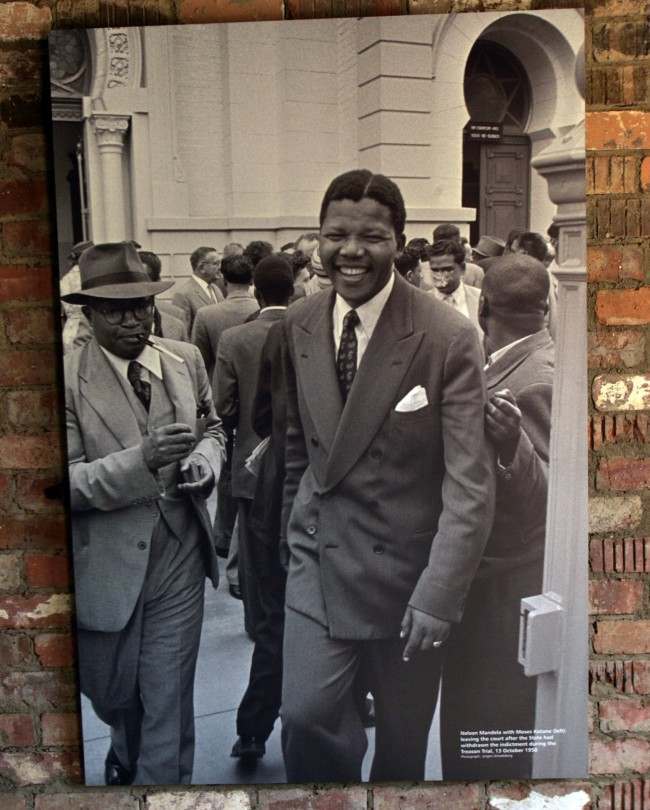
Baton-wielding police break up the crowd outside the Drill Hall, in Johannesburg, South Africa, Dec. 31, 1956, as the ‘Treason Trials’ opened. Nelson Mandela was among the people who were on trial.
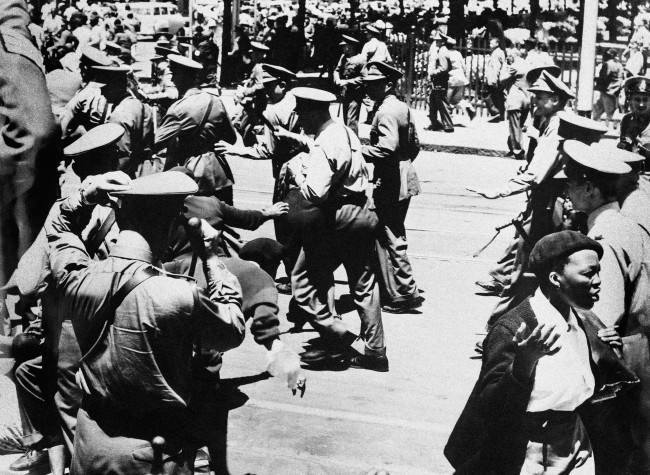
The ANC was outlawed in 1960 and Mr Mandela went underground.
* Already facing treason charges, he went underground as a leader of the A.N.C.’s new guerrilla wing, Umkhonto we Sizwe (“Spear of the Nation”). Dressed in different disguises—a gardener, a chef, a soldier—he popped up around the country, and then disappeared again. His exploits earned him a nickname: the Black Pimpernel.
A change had come.
* Sharpbille marked the end of peaceful resistance and Mr Mandela, already national vice-president of the ANC, launched a campaign of economic sabotage.
He was eventually arrested and charged with sabotage and attempting to violently overthrow the government.
Speaking from the dock in the Rivonia court room, Mr Mandela used the stand to convey his beliefs about democracy, freedom and equality.
“I have fought against white domination, and I have fought against black domination.I have cherished the ideal of a democratic and free society in which all persons live together in harmony and with equal opportunities. It is an ideal which I hope to live for and to achieve. But if needs be, it is an ideal for which I am prepared to die.”
In the winter of 1964 he was sentenced to life in prison.
In court, as elsewhere:

Three defendants in the first treason, Robert Resha, left, Patrick Molaoa, centre, and Nelson Mandela arrive in Pretoria from Johannesburg by special bus during the trial in August 1958. The trial lasted for four and a half years. Date: 01/08/1958
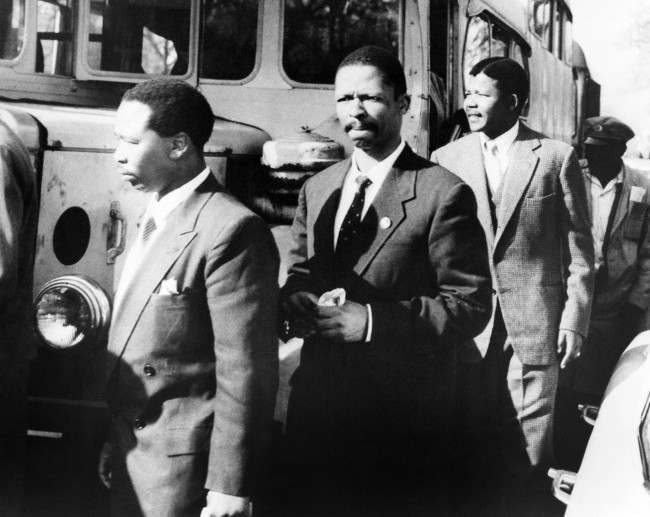
On 5 August 1962, police captured Mandela along with Cecil Williams near Howick. Jailed in Johannesburg’s Marshall Square prison, he was charged with inciting workers’ strikes and leaving the country without permission.
Winnie Mandela, wife of the African National Congress (ANC) leader Nelson Mandela, wears a traditional dress as she and two other women attend her husband’s trial in Pretoria, South Africa, Oct. 22, 1962. Nelson Mandela pleaded not guilty in a special regional court to charges of incitement and leaving South Africa illegally.
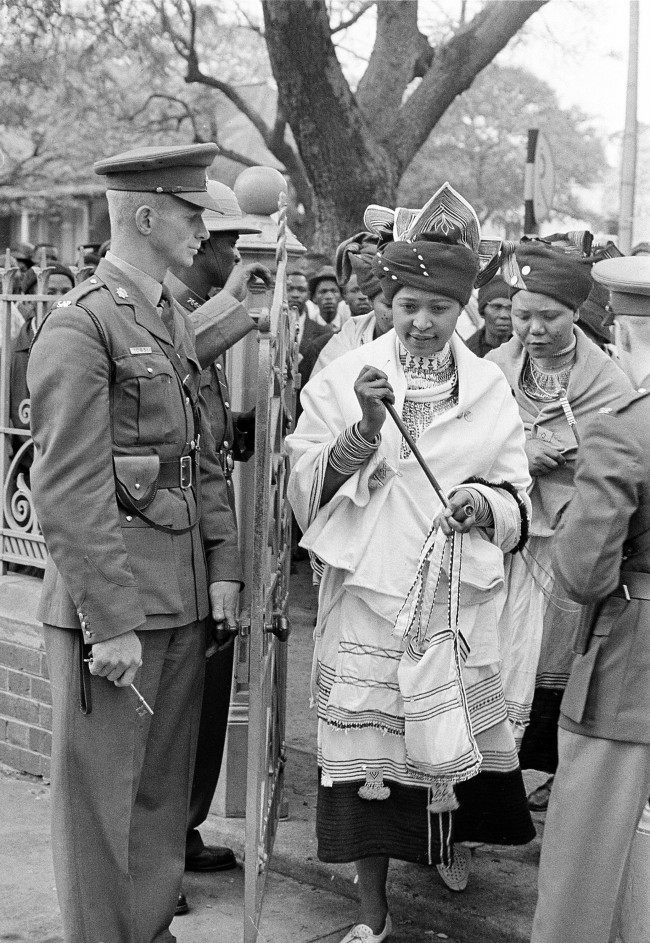
He told the court:
“I do not deny that I planned sabotage. I did not plan it in a spirit of recklessness nor because I have any love of violence. I planned it as a result of a calm and sober assessment of the political situation that had arisen after many years of tyranny, exploitation and oppression of my people by the whites.”
His co-accused included: Walter Sisulu, Dennis Goldberg, Govan Mbeki, Raymond Mhlaba, Elias Mosoaledi, Andrew Mlangeni – all ANC officials and Ahmed Kathrada, the former leader of the South African Indian Congress.
Winnie stood by him. But was he ever the family man?
The anti-apartheid movement of the 1950s and 1960s might have been built upon fighting injustice, but it was fuelled by alcohol and libido, and many of the white communists were just as keen as the black nationalists to use politics — as David James Smith relates — to get their hands into girls’ pants. Mandela’s behaviour was unusual only in his emotional neglect of his wives and children. He shunned even his own mother, whom he rarely saw before he went to prison, apparently because he was embarrassed by her lack of education. He drove his first wife, Evelyn, close to madness by his casual adultery, allowing one lover to walk into the marital bedroom while she was present in their cramped Soweto house. Evelyn threatened to throw boiling water over the woman if he brought her home again.
There were numerous other women apart from Evelyn and his second wife, Winnie; almost certainly an unacknowledged illegitimate child; and allegations by poor, bitter Evelyn in her divorce petition that he had beaten her. The mystery of Mandela lies in the jarring contrast between his behaviour towards his family, and his princely courtesy to everyone else
Winnie Mandela, wife of African National Congress leader Nelson Mandela, escorts his mother Nosekeni Fanny through a police cordon outside the court in Pretoria, South Africa, June 11, 1964, where he was a defendant in the treason trial. Mandela was found guilty on all four counts and together with six others, was sentenced to life imprisonment.
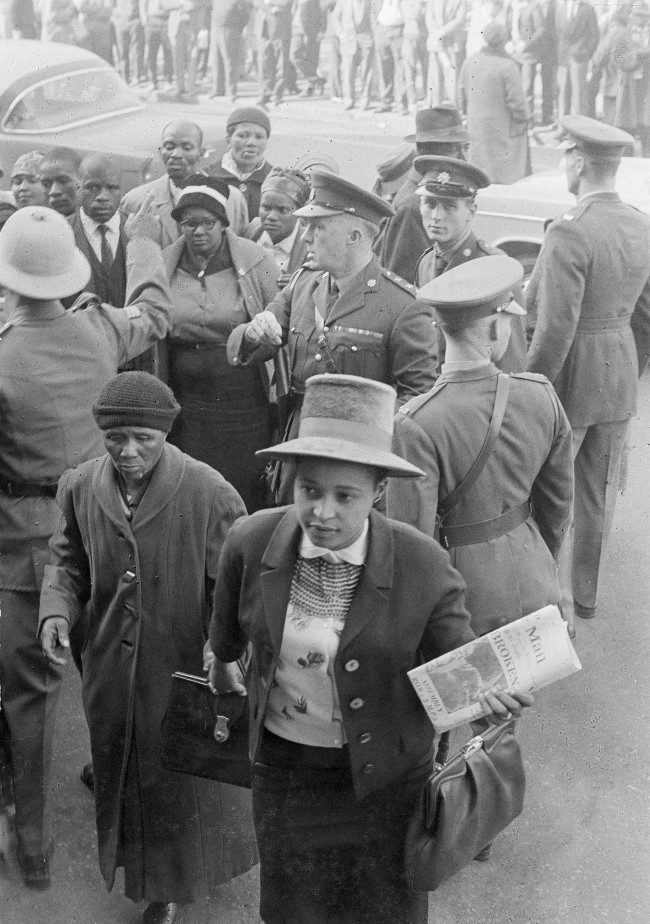
* Towards noon on April 20, 1964, after four and a half hours on his feet, Nelson Mandela was nearing the end of his opening statement at his trial in South Africa’s Supreme Court in Pretoria. He faced charges of sabotage that were equivalent in law to treason. His lawyer had also been his typist for the 81-page speech and had implored him to leave out its last line, saying it would be an invitation to the court to impose the death penalty. Mandela made him type it anyway, and now, after describing his ideal of “a free society in which all persons live together in harmony and with equal opportunities”, he read it out. “If needs be,” he said, “it is an ideal for which I am prepared to die.”
In his trial speech, Mandela explained carefully and at length that he was neither Communist nor Marxist. He was, he said, “an African patriot”, born into a chief’s family in the rolling hills of the Transkei and determined to borrow from both East and West to realise the potential of what should be “one of the richest countries in the world”. Thirty years later that patriotism was the theme of a presidential inauguration address crafted as an appeal to South Africans of every colour, each one “as intimately attached to the soil of this beautiful country” as the jacarandas of Pretoria and the mimosas of the Bushveld.
* Lawyer for the defendants, Harold Hansen QC said: “These accused represent the struggle of their people for equal rights. Their views represent the struggle of the African people for the attainment of equal rights for all races in this country.”
But the judge, President Quartus de Wet, said he was not convinced by their claim to have been motivated by a desire to alleviate the grievances of the African people in this country.
Judge de Wet said: “People who organise revolution usually plan to take over the government as well through personal ambition.”
Police clear away Africans from the area of the court in Pretoria, South Africa, after a verdict of guilty was pronounced on defendants in the South African treason trial on June 11, 1964. African nationalist leaders Nelson Mandela and Walter Sisulu were found guilty on all four counts, as were four other African defendants. Dennis Molberg, a white civil engineer, was found guilty on all counts, but the two other white defendants were found not guilty and discharged. The only Indian defendant was found guilty on the sabotage count only. All seven found guilty were sentenced to life imprisonment.
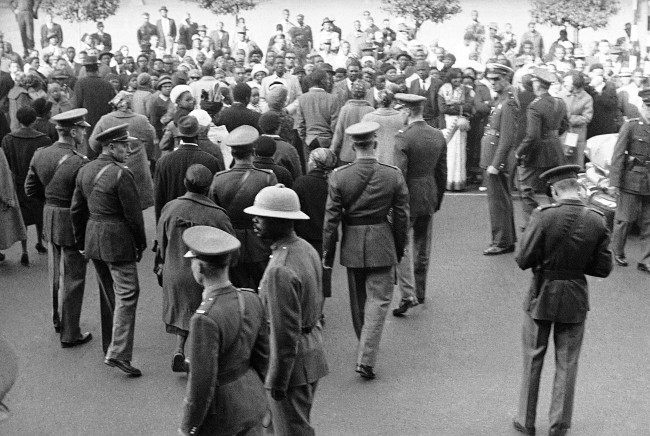
Police join hands to hold back demonstrators outside court in Pretoria, South Africa, June 12, 1964 after eight of the accused in the Rivonia Sabotage trial, including Nelson Mandela and Walter Sisulu, were sentenced to life imprisonment.
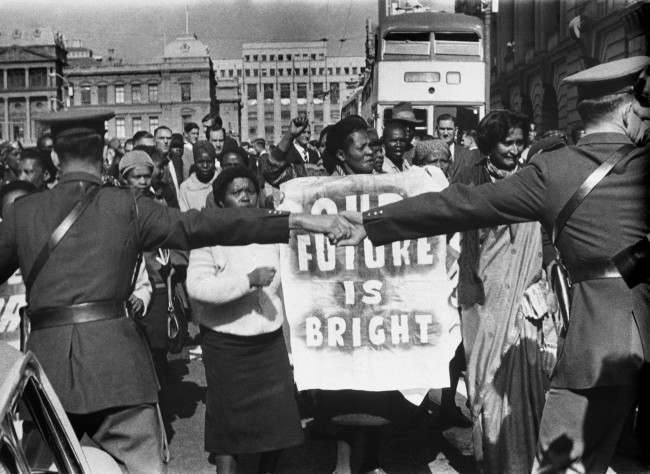
Anti-apartheid demonstrators gather outside the South African Embassy in Trafalgar Square, London, June 12, 1964, in protest against the sentence to life imprisonment of Nelson Mandela, former chief of the banned African National Congress. Mandela, 46, and seven other defendants were found guilty in the South African treason trial in Pretoria. They were sentenced today.
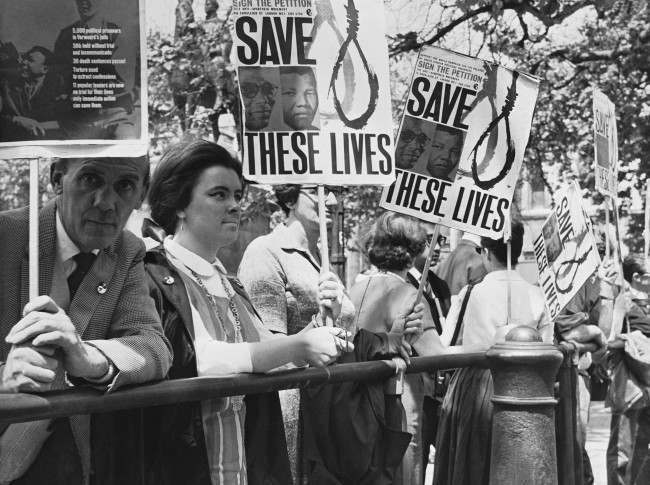
Showing her concern, a woman moves through the crowd to shake hands with Winnie Mandela, wife of African National Congress leader Nelson Mandela, as she leaves court in Pretoria, South Africa, June 12, 1964, after her husband was sentenced to life imprisonment. Mandela was one of the eight men found guilty in the Rivonia sabotage trial. All received the same sentence.
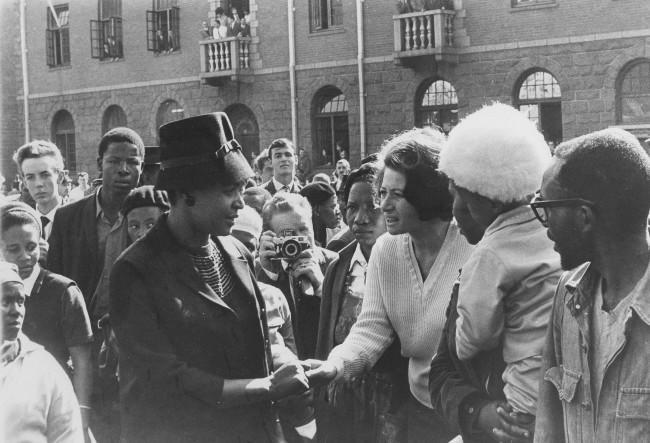
Zindzi Mandela reads the refusal of her father, Nelson, to leave prison in Johannesburg, after South African President P.W. Botha offered him conditional release. Date: 10/02/1985

* On 31 January 1985 State President P W Botha offers Nelson Mandela, leader of the banned African National Congress (ANC), conditional release from the prison sentence he had been serving since the conclusion of the Rivonia Trial in 1964. The condition of his release is that he renounces violence, and violent protest, as a means to bring about change in South Africa.
Mandela communicates his refusal of the offer through his daughter, Zinzi Mandela, who reads his statement to this effect at a rally in Soweto on 10 February 1985. He states that the ANC’s only adopted violence as a means of protest ” when other forms of resistance were no longer open to us “. Mandela had refused previous offers of conditional release where the condition was that he be confined to the Transkei.
The rock quarry where prisoners of Robben Island were once forced to work is seen, Sunday, June 30, 2013. Former South African president Nelson Mandela spent 18 years of his 27-year prison term on the island locked up by the former apartheid government.
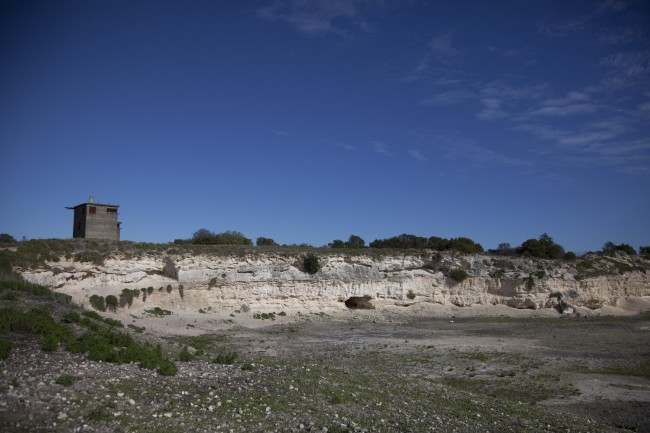
Nelson Mandela was born in 1918. He was in prison from 1962 to 1990. He became President of South Africa in 1994, and retired in 1999.
Would you like to support Flashbak?
Please consider making a donation to our site. We don't want to rely on ads to bring you the best of visual culture. You can also support us by signing up to our Mailing List. And you can also follow us on Facebook, Instagram and Twitter. For great art and culture delivered to your door, visit our shop.

